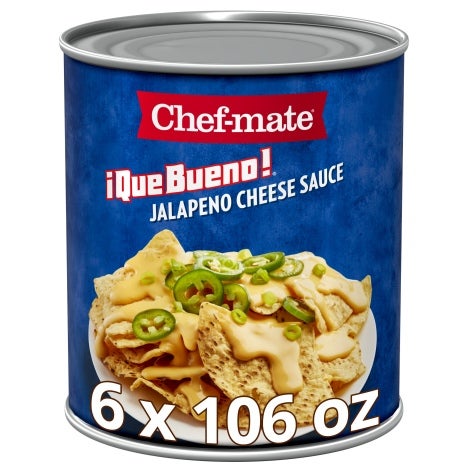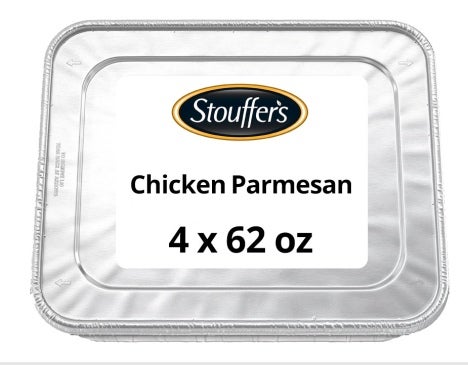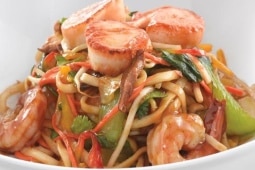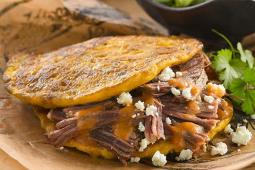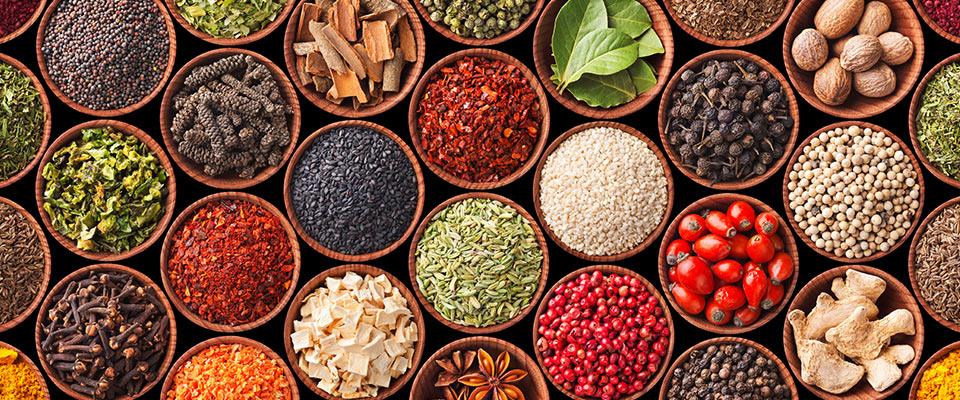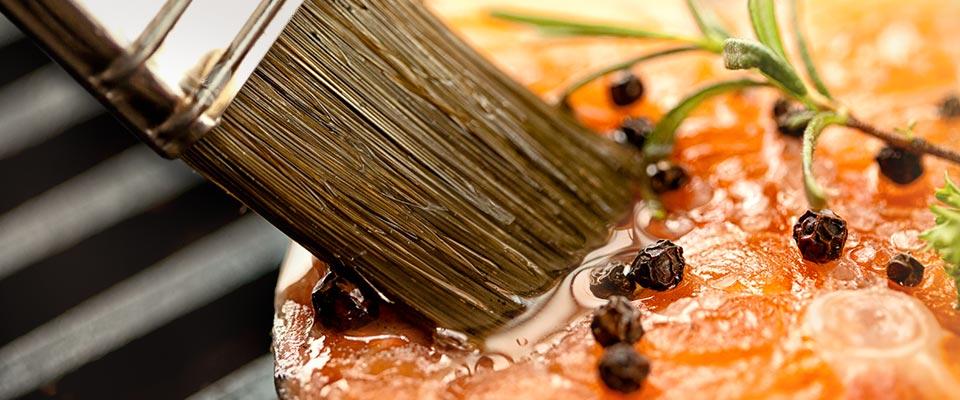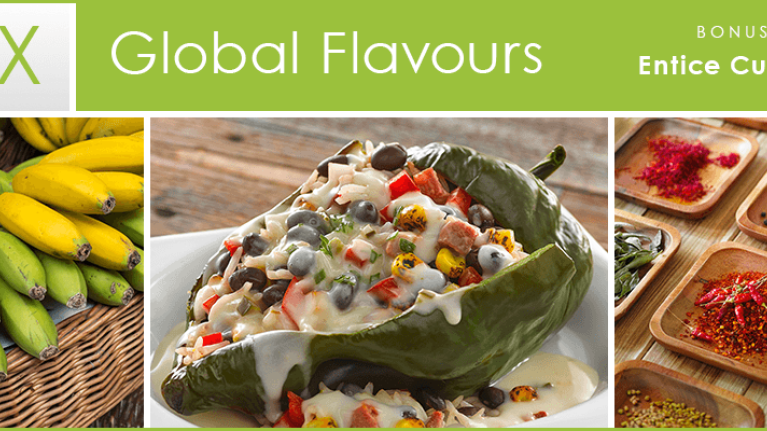
The Global Pantry—Few Ingredients, Many Cuisines
FOURTH IN A SERIES: Many international cuisines share ingredients, yet have very different flavour profiles in the finished dish. Learn how ingredients from your global pantry can produce a world of flavour.
As diverse as international cuisine is, there are certain categories of ingredients that are similar to multiple culinary traditions. Chiles, for instance, are popular all over the world, particularly where the climate is warmer, while virtually all Asian cultures share a love of noodle dishes.
Chiles
Where there is global cooking, there are chiles—and they’re really catching on in the United States, too. With thousands of varieties grown throughout the world, it would take several lifetimes to experiment with them all, but several are trending right now, in order of heat on the Scoville scale.
Pepperoncini – Also known as Tuscan Peppers, these sweet, mild peppers are found in Italy and Greece, particularly in pickled form.
Ají Panca – The signature chile of Peruvian cuisine is relatively mild, with a smoky, fruity taste. In the United States it’s most available in dried or paste form, rather than fresh.
Poblano – Common to Mexican food, these large, relatively mild peppers are often stuffed. The dried version is called the ancho.
Jalapeño – Probably the first hot pepper to come into common use in the United States, this relatively small, medium-hot pepper can also be smoke-dried to produce a chipotle. Convenient chipotles en adobo are preserved in a piquant, tomato-based sauce that can also be used for flavouring.
Serrano – A smaller and spicier version of the jalapeño.
Ají Amarillo – This yellow chile is popular in South America, and is medium-hot to hot, with a unique fruity flavour. It’s available in frozen and paste form.
Bird’s Eye – This tiny, very hot chile originated in Cambodia, Vietnam, Thailand, The Philippines, and surrounding countries, but they can now be found all over the world.
Did You Know? The heat of any specific type of pepper can vary widely depending on where and when it was grown. Take the guesswork out of working with chiles with Minor’s® flavor concentrates, including Chipotle, Ancho, Fire Roasted Poblano, and Fire Roasted Jalapeño.
Asian Noodles
Soba – These Japanese buckwheat noodles have a pleasing nutty taste and resistant nutty chew, as well as a characteristic brown color. They are delicious warm, but can also be chilled for a salad.
Udon – The thickest of Japanese noodles are made from wheat flour, salt, and water. They are most commonly served in a brothy soup, flavoured with mirin and soy sauce.
Rice Noodles – Common to Vietnamese pho, rice noodles are also common in Chinese, Thai, and Malaysian cooking. Made from rice flour and water, these noodles are naturally gluten free. Most are long and thin, but flat ones are also available. Dry rice noodles are partially cooked, and are often prepared by soaking in lukewarm or hot water.
Ramen – Forget the cellophane packaged block of instant noodles; true ramen noodles have a springy bite that comes from the mixture of wheat flour, egg, and salt. There are many varieties of ramen noodle, from wavy to straight, thin to thick.
Cellophane – Also known as glass noodles because they become translucent when cooked, cellophane noodles are made from mung bean, yam, or potato starches, and are naturally gluten free. They are also quite versatile, and are used in a variety of East Asian cuisines, including Korean, Thai, and Vietnamese dishes, most notably as a filling for summer rolls.
Get Started: Use any or all of these noodles in one-trend noodle soups and bowls featured in the Nestlé Professional Soup & Noodle Bar (PDF) Action Station.
Other Key Ingredients
The world pantry could fill a large warehouse, but the following ingredients are essential:
Coconut Milk – Common in Thai and South Indian cooking, the liquid made from pressing fresh coconut meat is used for curries, satays, soups, and beverages.
Cotija – Mexico’s hard, aged cows' milk cheese has a salty flavour reminiscent of feta's. It's grated and sprinkled over countless savory dishes as a garnish.
Fish Sauce – The not-so-secret ingredient in many Southeast Asian specialties, the amber liquid extracted from salted, fermented fish adds a powerful kick of umami.
Harissa – A hot chili paste, commonly found in North African cooking—particularly Algerian, and Tunisian cuisine—that is added to couscous, soups, pastas, and other recipes.
Kimchi – Also called kimchee, this traditional spicy, fermented Korean condiment and side dish is made of vegetables (most commonly napa cabbage) with a variety of seasonings including red chili pepper.
Toasted Sesame Oil – Made from white pressed and toasted sesame seeds, this distinctive oil is used as a flavouring in Chinese and other Asian cuisines.
Wasabi – A Japanese plant with a thick green root that tastes like strong horseradish and is used in cooking, especially in powder or paste form as an accompaniment to raw fish or a general condiment.
Try This: Add Maggi® Seasoning or Maggi Spicy Seasoning to any recipe that needs a little bit of savory umami flavour kick.
